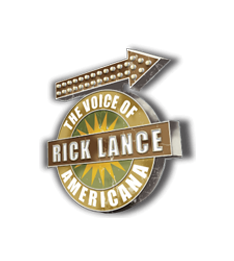When the wrong voice breaks the moment, the whole story suffers.
Have you ever watched a powerful scene only to feel disconnected because the voiceover was too dramatic—or too flat? If so, you’re not alone. In the delicate art of documentary narration, tone is everything. It’s not just about speaking—it’s about honoring the truth.
A mismatched tone can turn a compelling story into a performance. And when you’re dealing with sensitive themes like domestic abuse, genocide, or climate catastrophe—every syllable counts.
Understanding the Power of Restraint in Voiceover
The loudest voice is not always the most effective. Often, it’s the whisper that lingers.
In voiceover work for serious topics, it’s not about grabbing attention—it’s about holding space. And that takes discipline. Whether you’re narrating a medical documentary, a war story, or an environmental collapse, your audience doesn’t want to be told what to feel. They want to feel it on their own terms.
Techniques That Command Respect:
- Whispered calm: Used to communicate safety, empathy, and vulnerability.
- Restrained authority: Offers clarity without control—ideal for factual storytelling.
- Emotionally neutral reads: Let the visuals and story take the lead, free from bias.
These subdued narration styles help create emotional depth without overwhelming the viewer.
But how do you control your voice when the content is emotionally heavy?
The Science Behind Audience Response
Let’s step into the numbers—because emotions may lead, but data validates.
According to the Nielsen Media Impact Report 2023, documentary narration tone affects audience trust by nearly 28%, especially when covering serious or sensitive subjects. The takeaway? People don’t just listen to what you say—they listen to how you say it.
In this trust-building exercise, your voice becomes the channel through which facts earn credibility.
And remember, voiceover is not performance here—it’s presence.
Navigating the Fine Line Between Drama and Depth
So how do you strike the perfect balance?
When voicing serious themes, your tone must carry weight without tipping into the theatrical. That’s the difference between being impactful and being inappropriate.
Master the Mic with These Adjustments:
- Pacing: A slower pace respects gravity and gives space for emotion.
- Breath control: Keeps delivery grounded, even during intense passages.
- Dynamic range: Use it to guide—not manipulate—the listener’s focus.
A documentary narration isn’t where you show off vocal range. It’s where you showcase restraint and emotional intelligence.
Tailoring Voice to Tone: Examples That Get It Right
Think about the deepest voice actor you’ve ever heard. What made that performance unforgettable? Likely, it wasn’t the depth alone—but the depth in control.
Veterans like Rick Lance make it a point to match the emotional and technical standards required for each piece. Whether it’s a National Geographic documentary or a faith-based PSA, he adapts not just his tone—but his intent. That’s the secret sauce: understanding that your voice is part of a bigger truth.
Are you voicing the script—or voicing the silence around it?
Where Whisper Beats Roar: Less Is Often More
In the age of overstimulation, the quiet voice often wins the listener’s heart.
When narrating documentaries about trauma, injustice, or environmental crisis, your power lies not in intensity—but in integrity. You become the connective tissue between the footage and the facts.
- Don’t over-read. Let the visuals breathe.
- Don’t overemphasize. Let the truth carry weight.
It’s not about reducing your performance. It’s about refining it.
Could your next project speak louder… if you chose to speak softer?
Your Voice. Their Truth. One Purpose.
The best documentary narration earns trust before attention. You’re not just narrating events. You’re giving voice to people, places, and moments that demand respect.
So the next time you face a script that deals with a heavy subject—pause.
Ask yourself not just how to speak it—but how to honor it.
Will you whisper—or roar? Or will you learn when to do both?

